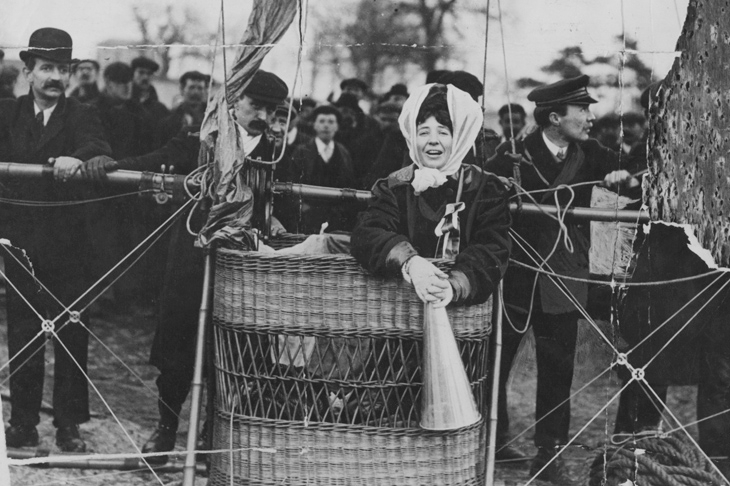On the evening of 28 October 1908, two unremarkable middle-class women wearing heavy overcoats gained admission to the Ladies’ Gallery, high above the chamber in the House of Commons. Suffragettes had previously hit the headlines by chaining themselves to the railings at 10 Downing Street and, emboldened by this success, the leaders of the women’s movement planned an even more outrageous demonstration. The Ladies’ Gallery was surrounded by a metal grille, and this had huge significance for the suffragettes, as it symbolised their exclusion from the patriarchal political system. The plot was for two of them to chain themselves to the hated grille. One of the women chosen for the job was an Australian named Muriel Matters.
Muriel wore a thick leather belt round her waist and carried chains beneath her coat. At 8.30 p.m. she rushed forward, stripped off her coat and chained herself to the grille with a padlock. She then stood up and made a loud speech demanding the vote for women. Soon policemen and attendants arrived and, after a scuffle, she was removed, still attached to her panel of the grille. She was taken to a committee room, and the chains were filed off. To her disappointment, she was not arrested. She immediately joined the throng of women who were demonstrating in St Stephen’s Hall. Here she did contrive to get herself arrested for disorderly behaviour. She refused to pay the fine and was sentenced to imprisonment in Holloway for a month.
With a name like Muriel Matters (her real name), she was almost born to become a celebrity. She grew up in South Australia, her grandparents having emigrated from Plymouth. In Adelaide she attended high school, and she was trained in elocution by the same man who taught Lionel Logue, the hero of the film The King’s Speech. Small, with abundant fair hair and wide-apart eyes, Muriel had a natural stage presence, and she became a performer, giving recitals and sometimes acting. She claimed she was converted to feminism by Ibsen’s play The Doll’s House, but the fact of ther matter was that Adelaide blazed a trail in women’s rights. South Australia was the first Australian state to give women the vote in 1894, and in 1902 women got the vote to the federal Parliament.
Muriel came to England in 1905, aged 28, and joined the fight for women’s suffrage. In 1907 the militant Women’s Social and Political Union split over Mrs Pankhurst’s autocratic leadership, and Charlotte Despard broke away and formed the democratic Women’s Freedom League (the suffragettes were not good at thinking of snappy titles). Muriel followed Despard into the WFL, and she became their star speaker.
Travelling in a caravan drawn by a horse called Asquith (after the stubbornly anti-suffragist Prime Minister), Muriel toured the south of England, stopping to make speeches wherever she went, cheerfully giving as good as she got to the men who heckled her. She was fearless. After chaining herself to the grille, her next stunt was even more dare-devil: she flew over Westminster in an airship on the day of the opening of Parliament in 1909, throwing out leaflets for ‘Votes for Women’. Unfortunately the wind blew them off course, and she flew far too high for her megaphone to be audible.
Muriel Matters went on to marry an American dentist in 1914. By then she had broken with the militant wing of the suffrage movement; she realised that terrorist tactics of violence were counterproductive, giving the anti-suffragists good reason for refusing the vote. She was a pacifist in the Great War, and in 1916 she trained with Maria Montessori, working with Sylvia Pankhurst to help children in the East End of London.
When she died in Hastings in 1969 Matters left few papers, and Robert Wainwright has managed to reconstruct her career largely from suffrage publications and digitised newspapers. He succeeds marvellously in bringing to life a woman who until recently was little more than a name in the history of the suffragette movement. Relying so heavily on newspapers means, however, that we get a lot of Muriel’s speeches, but very few of her private reflections or letters.
Reading this book reminded me of the 2015 film Suffragette. As in that film, the protagonist’s heroism is accepted unconditionally. No one today would deny that the women’s cause was right, but that doesn’t mean that everyone who disagreed with it at the time should be disregarded. Wainwright makes no attempt to understand the political class of Edwardian England, dismissing them as ‘trussed-up, pompous men’ making tedious speeches. The result is a one-sided story decidedly lacking in nuance.






Comments